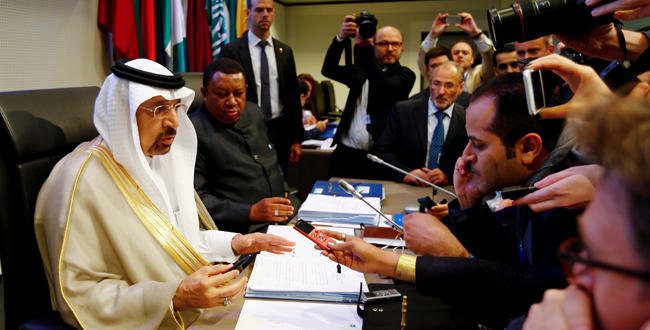Saudi Arabia expects the extension of a deal among 24 oil producers cutting production will ease the global crude glut sufficiently by early 2018. Energy Minister Khalid Al-Falih said. “All the simulations that have been done by Organization of the Petroleum Exporting Countries (OPEC) and non-OPEC experts… demonstrated that we will be within the five-year average in the first quarter of next year.” Al-Falih said.
Late last year. the 24 countries. including the OPEC and Russia. agreed to cut production by 1.8 million barrels per day in order to reduce global oil inventories to the five-year average. This has helped lift oil prices from $26 barrel in early 2016 to around $50 now. and the producers agreed a nine-month extension at talks in Vienna on Thursday.
Al-Falih told reporters at the start of the meeting at the headquarters of the OPEC that this was “almost certain… to do the trick.”
However. higher oil prices have helped rival shale oil producers in the US. which is outside the accord. to increase their output and slow down the reduction in inventories. Al-Falih said. however. that he was not worried.
“Shale is a important variable but we don’t believe it is going to significantly derail or affect what we are doing.” he said.
Chris Beauchamp. market analyst at online trade IG. said that Al-Falih’s belief that no more cuts are needed was “quaint.”
“This caused a swift dive in oil prices. unsurprisingly. but we can expect more of the same throughout the day.” Beauchamp said.
Oil prices fell on Thursday. Brent crude oil dropped as much as $1.24 a barrel to a low of $52.72 before regaining some ground to trade 80 cents lower at $53.16 by 1100 GMT. US light crude was 90 cents lower at $50.46.
Both benchmarks were still up about 15 percent from May lows. “It is a disappointment that OPEC hasn’t done more to balance the markets.” said Olivier Jakob. energy markets analyst at Swiss consultancy Petromatrix. “A nine-month extension of the output cuts is already baked into prices. This shows there’s not much more OPEC can do.”
Amrita Sen. analyst at consultancy Energy Aspects agreed. “Nine months was priced.” she said. “We thought the market would sell off if it was just (an extension of) nine months.” Energy consultancy Wood Mackenzie said keeping existing oil output at current levels for another nine months would result in a 950.000 bpd production increase in the US. thus undermining OPEC’s efforts to balance supply and demand.
US oil production has already risen by more than 10 percent since mid-2016 to more than 9.3 million bpd as drillers take advantage of higher prices and the supply gap left by OPEC and its allies.

 Iran Energy News Oil, Gas, Petrochemical and Energy Field Specialized Channel
Iran Energy News Oil, Gas, Petrochemical and Energy Field Specialized Channel



